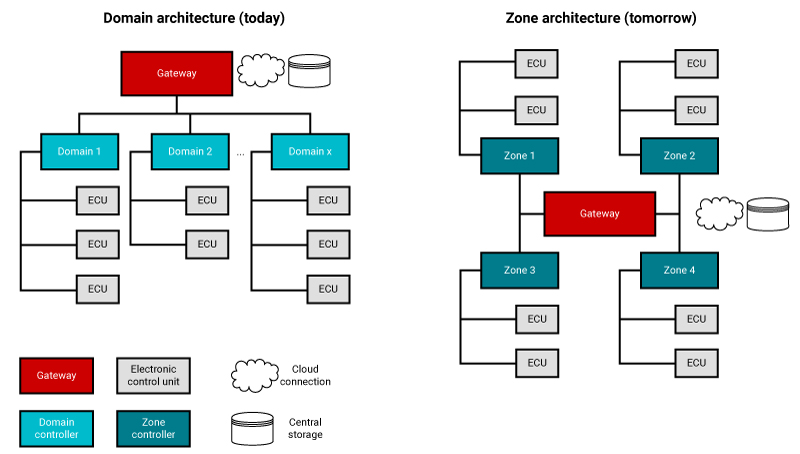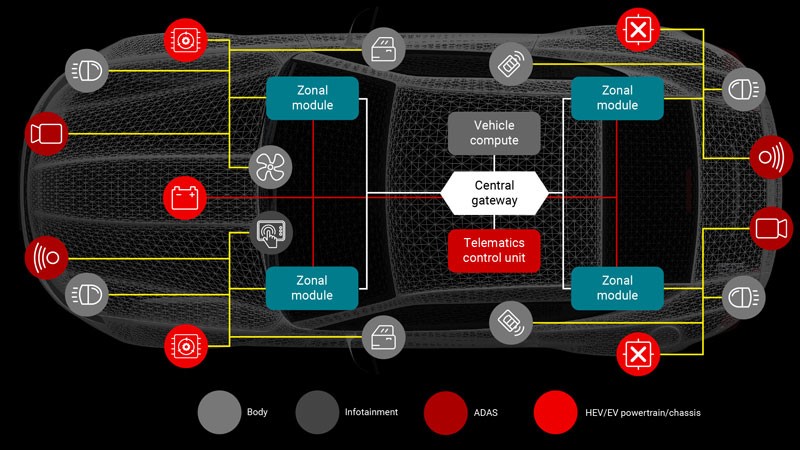SPRY345B february 2022 – april 2023 DP83TG720R-Q1 , DP83TG720S-Q1 , TCAN1043A-Q1
- At a glance
- Authors
- Introduction
- Overcoming E/E architecture challenges
- Power distribution challenges and solutions
- Decentralization of power distribution
- Replacing melting fuses with semiconductor fuses
- Smart sensor and actuator challenges and solutions
- Zonal modules –new microcontroller requirements
- Smart sensors and actuators
- Data challenges and solutions
- Types of data
- Time sensitivity of data
- Communication security
- Conclusion
Overcoming E/E architecture challenges
Today’s E/E architectures primarily employ a domain architecture, organizing electronic control units (ECUs) and cabling together into specific domains such as the powertrain domain. In contrast, zone architectures group many – if not all – domain functions based on their geographical location, or zone, inside the car.
Figure 1 illustrates the domain and zone methods of grouping the vehicle functions, while Figure 2 shows a more detailed view of the zone architecture that includes a central computing node called Vehicle compute.
 Figure 1 Domain vs. zone
architectures.
Figure 1 Domain vs. zone
architectures. Figure 2 A typical zone architecture in
a car showing sensors, actuators, zonal modules and a central computing
node.
Figure 2 A typical zone architecture in
a car showing sensors, actuators, zonal modules and a central computing
node.This transformation from a domain to a zone architecture will facilitate independence of sensors and actuators from the central vehicle compute node. In other words, hardware and software update cycles can differ, and sensor and actuator designs can last a more vehicle design cycles. Moreover, zone architectures will reduce the number of ECUs and cable lengths, simplifying the vehicle architecture and the associated system validation effort.
The zone architecture gives OEMs much more control, from high-level software maintenance with over-the-air updates; firmware-over-the-air (FOTA) updates and always-on cloud connection to enable new functions and to improve features such as autonomous driving. This will also allow OEMs to move to a service-based software structure, such as shifting real-time control loops to the zone modules. Additionally, zone modules enable more optimized power distribution topologies and including powering down of unused modules, which is especially advantageous in battery electric vehicles and hybrid electric vehicles.
Despite the potential for tremendous improvements through zone architectures, there are challenges in the areas of power distribution, sensors and actuators, and data-plane topologies. Power distribution will transition from a centralized to a decentralized implementation using smart fuses located in the zonal modules. Sensors and actuators will become smart. Some functionality – including control loops – will move to zonal modules in order to permit the increase of service- vs. signal-based communication. And finally, data communication will occur over higher-speed networks, with new physical layers (PHYs) transmitting a variety of data types.